
Red-cheeked squirrels are species of squirrels in the genus Dremomys in the subfamily Callosciurinae. The six species which are all found only in Asia are listed as "Least Concern" by the IUCN.

The Javan or Eastern pipistrelle is a species of pipistrelle bat found in South and Southeast Asia.

The common thick-thumbed bat is a species of vesper bat found in Brunei, Indonesia, Malaysia, Philippines, and Thailand.

Blanford's bat, also known as the least false-serotine bat, is a species of vesper bat. It can be found in Brunei, Cambodia, Indonesia, Laos, Malaysia, Myanmar and Thailand, where it lives in various different forested habitats. The International Union for Conservation of Nature has assessed its conservation status as being of "least concern".

The bronze sprite, also known as the black-gilded pipistrelle, is a species of vesper bat found in China, India, Myanmar, and Nepal.

The Himalayan field rat, sometimes known as the white-footed Indo-Chinese rat, is a species of rodent in the family Muridae. It has a wide range, being found in India, Bangladesh, Nepal, Bhutan, China, Myanmar, Laos, Thailand, and Vietnam, with introduced populations in Indonesia (widely), Palau, and the Philippines. A common species, the International Union for Conservation of Nature has assessed its conservation status as being of "least concern".

The black-bearded tomb bat is a species of sac-winged bat found in South and South East Asia.

The Asian gray shrew is a species of mammal in the family Soricidae. It is found in Bhutan, Cambodia, China, India, Laos, Malaysia, Myanmar, Nepal, Pakistan, the Philippines, Thailand, and Vietnam. It is one of the commonest species within its range and the International Union for Conservation of Nature has assessed its conservation status as being of "least concern".

The trident bat or trident leaf-nosed bat is a species of bat in the family Hipposideridae. It is widely distributed in the Middle East, South and Central Asia, and North, East, and Central Africa. Its natural habitats are subtropical or tropical dry forests, dry savanna, subtropical or tropical dry shrubland, caves and hot deserts.
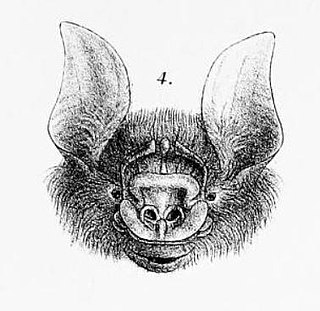
Aselliscus is a genus of bat in the family Hipposideridae. As of 2015, it contains the following species:

The wrinkle-lipped free-tailed bat is a species of bat in the family Molossidae. It is found in Bangladesh, Bhutan, Cambodia, China, Cocos (Keeling) Islands, India, Indonesia, Laos, Malaysia, Myanmar, Nepal, the Philippines, Sri Lanka, Thailand and Vietnam.
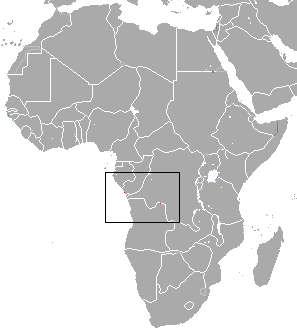
The lesser Angolan epauletted fruit bat is a species of megabat in the family Pteropodidae. It is found in Angola and the Republic of the Congo. Its natural habitats are subtropical or tropical dry and moist lowland forest, and savanna.
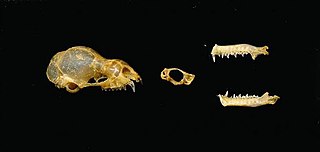
The ashy roundleaf bat is a species of bat in the family Hipposideridae found in Bhutan, Cambodia, India, Indonesia, Laos, Malaysia, Myanmar, Nepal, Pakistan, Thailand, and Vietnam.

The acuminate horseshoe bat is a species of bat in the family Rhinolophidae. It is found in Southeast Asia. It lives in forests and urban areas.

The intermediate horseshoe bat is a bat species of the family Rhinolophidae that is very widespread throughout much of the Indian subcontinent, southern and central China and Southeast Asia. It is listed by IUCN as Least Concern as it is considered common where it occurs, without any known major threats.

The Bornean horseshoe bat is a species of bat in the family Rhinolophidae. It is found in Brunei, Cambodia, Indonesia, Laos, Malaysia, and Vietnam.

The least horseshoe bat is a species of bat in the family Rhinolophidae. It is found in Cambodia, China, India, Indonesia, Laos, Malaysia, Myanmar, Nepal, Thailand and Vietnam. It is a food source of the parasite Sinospelaeobdella, a jawed land leech.
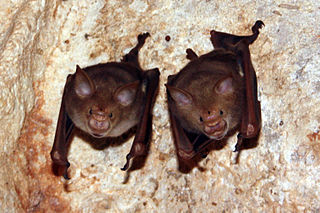
The Hipposideridae are a family of bats commonly known as the Old World leaf-nosed bats. While it has often been seen as a subfamily, Hipposiderinae, of the family Rhinolophidae, it is now more generally classified as its own family. Nevertheless, it is most closely related to Rhinolophidae within the suborder Yinpterochiroptera.
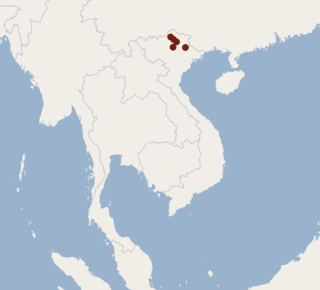
Dong Bac's trident bat is a species of bat in the family Hipposideridae. It is found in northeastern Vietnam. Its type locality is Na Phong cave, Ba Be National Park, Bac Kan Province, Vietnam.

Eumops delticus is a species of free-tailed bat found in South America.






















